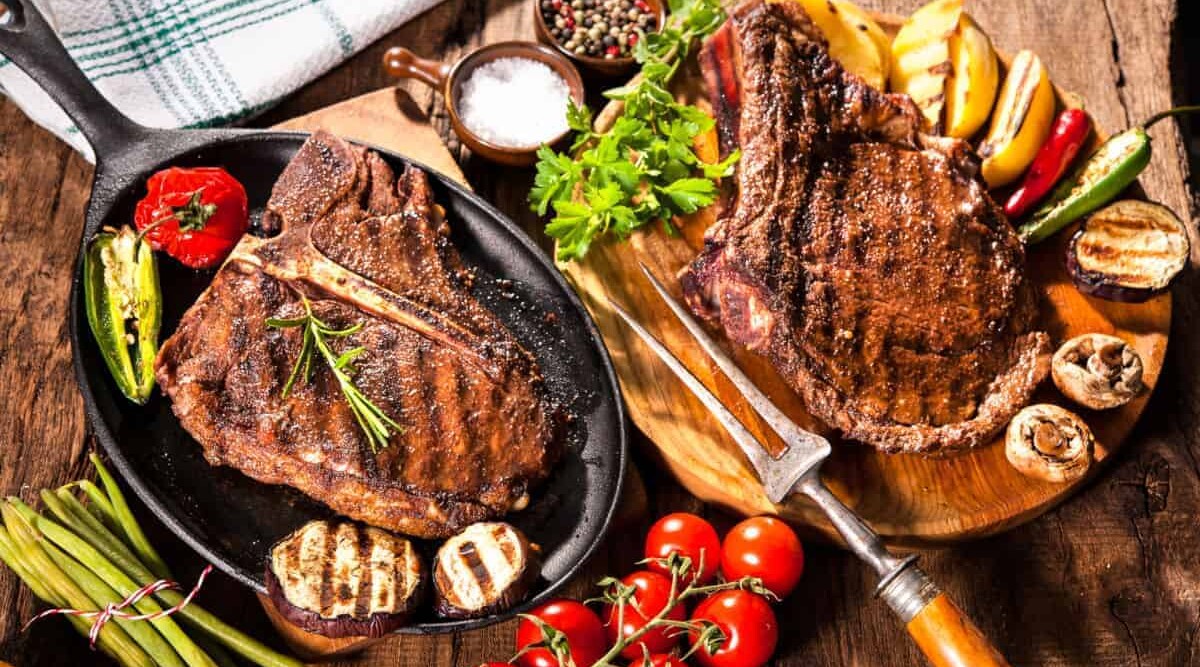
In this head-to-head comparison of porterhouse vs ribeye, you’ll learn all about two of the titans of the steak world.
You’re ready to drop a few dollars on some great steaks for the barbecue.
You want big, flavorful, impressive-looking slabs of meat to awe your family and friends, and delight your own palate. So, which steak is the one?
Below we talk about where each of these prime steaks comes from on the cow, and how that affects taste and tenderness.
You’ll get to know the differences between each cut and how to identify them. And ultimately, You’ll learn which one of these fabulous steaks is best for your grill, your budget, and your taste buds.
Which steak is a cut above? Read on, and all will be revealed.
Note: If you’re interested in learning about many more cuts, we also have an in-depth guide to every popular cut of beef.
Jump to:
- 1 What is a Porterhouse Steak?
- 2 What is a Ribeye Steak?
- 3 Porterhouse vs Ribeye: What is the Difference?
- 3.1 Fat Levels
- 3.2 Bone Content / Appearance
- 3.3 Cost: Which is More Expensive?
- 3.4 Cooking Methods — Is One Easier to Cook than the Other?
- 3.5 Is One Better for Grilling than the Other?
- 3.6 Difference in Tenderness
- 3.7 Which is More Flavorful
- 3.8 Which is USUALLY Bigger?
- 3.9 Tomahawks Can Break The Size Rules
- 4 Which Steak is Better?
- 5 When Would You Pick One Over the Other
- 6 Final Thoughts
What is a Porterhouse Steak?
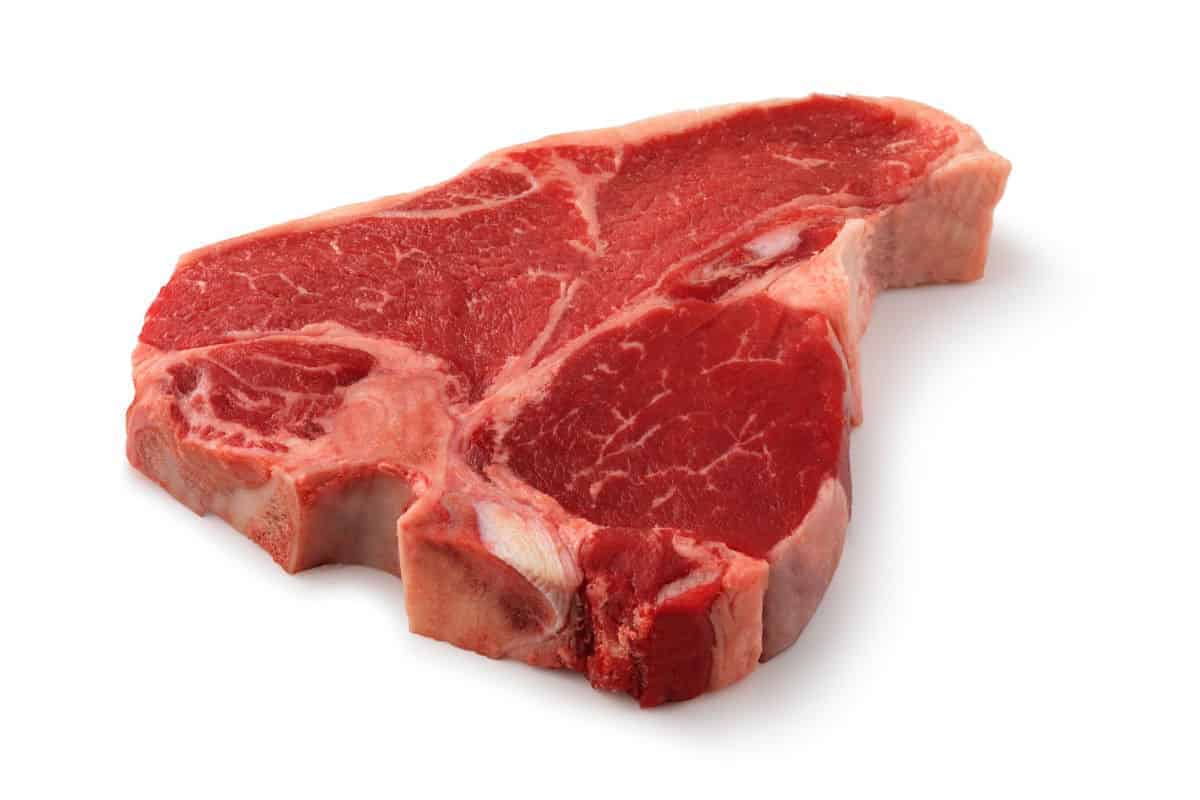
It’s a giant slab of meat, is what it is!
Porterhouse steaks are easily recognized by the large ’T’ or cross-shaped bone that delineates one end of the cut and bisects it roughly in half.
It comprises a combination of two different cuts either side of the T-bone, both strip steak and tenderloin steaks, one each side of the central bone.
The meat is deep red and heavily marbled with fat. Also, you’ll often find a ribbon of fat around much of the circumference.
Typical thickness is about 1.5 inches, but they come thicker and may weigh as much as two pounds uncooked.
A very popular cut, you should have no issue finding this in just about any butchers, and they will all know it is. But you can tell them the industry standard ID of IMPS/NAMP — 1173 just in case.
Where On the Cow Does it Come From?
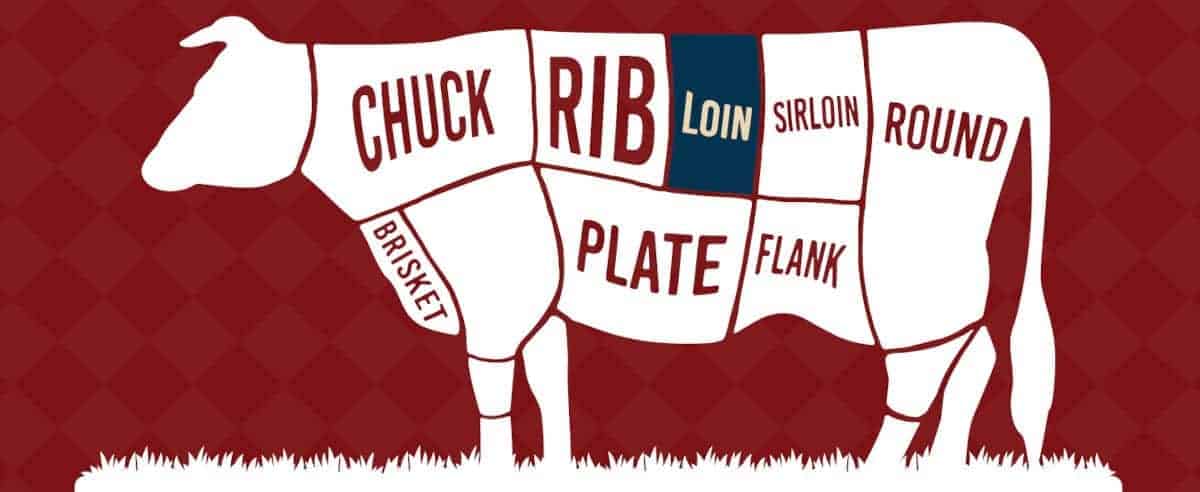
This premium steak is cut from the short loin primal, which is the first primal to the rear of center on the cow.
You get a two-for-one deal with a porterhouse — to one side of the bone is a tenderloin steak, and to the other is a top loin, sirloin or New York strip steak.
The top loin is the smaller of the two sections by a wide margin. If the steak was cut near the tenderloin, the loin section might actually be a filet mignon. Bonus!
The bone separating the two halves is a section of the lumbar vertebrae, the bones on the spine that run between the rear of the rib cage and the pelvis.
Difference Between Porterhouse and a T-bone
So, if a porterhouse is a two-sided steak divided by a t-shaped bone, what’s a T-bone?
For some butchers, chefs, and restaurants, there is no difference; many people use the names interchangeably.
However, the difference lies in the size of the tenderloin section.
The USDA stipulates that to be sold as a porterhouse, there must be at least 1.25 inches of meat from the center bone to the widest spot on the cut.
For further information, we have a dedicated article discussing the difference between porterhouse and T-bone steaks.
Where to Buy Porterhouse Steak Online
Being so popular, it should come as no surprise that numerous suppliers of porterhouse exist. Here are two of our favorites:
Snake River Farms
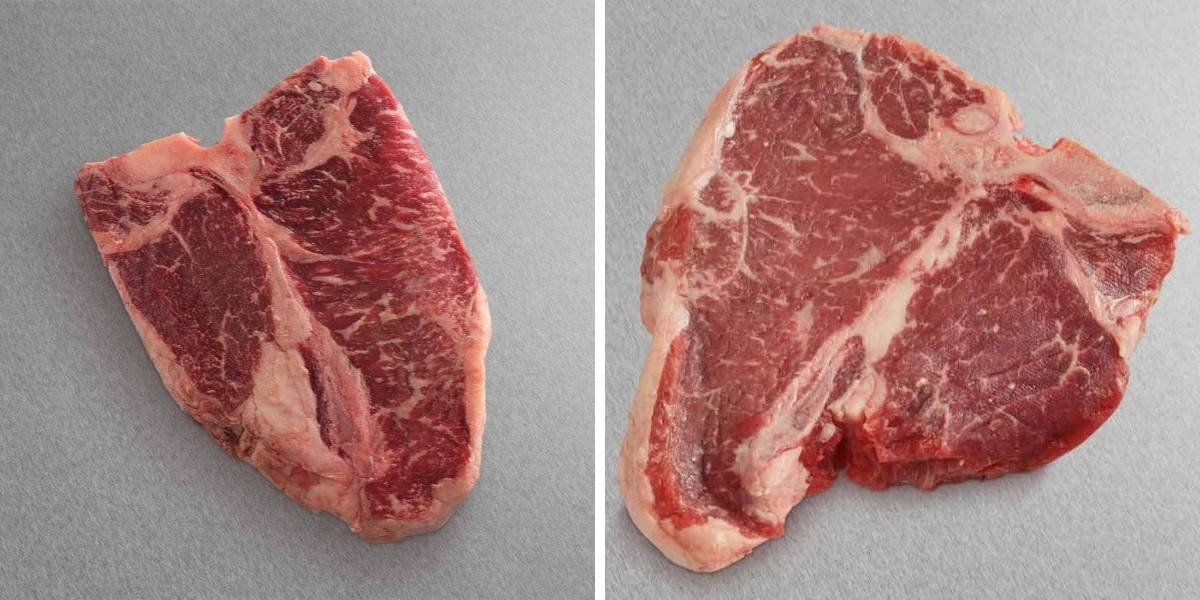
Snake River Farms offers five distinct grades of porterhouse steak at various pricing ranges and sizes ranging from 8oz to 32oz!
American Wagyu Black Grade, American Wagyu Gold Grade, American Kurobuta, and USDA prime dry-aged are among the grades available.
Check Price on Snake River Farms
Crowd Cow
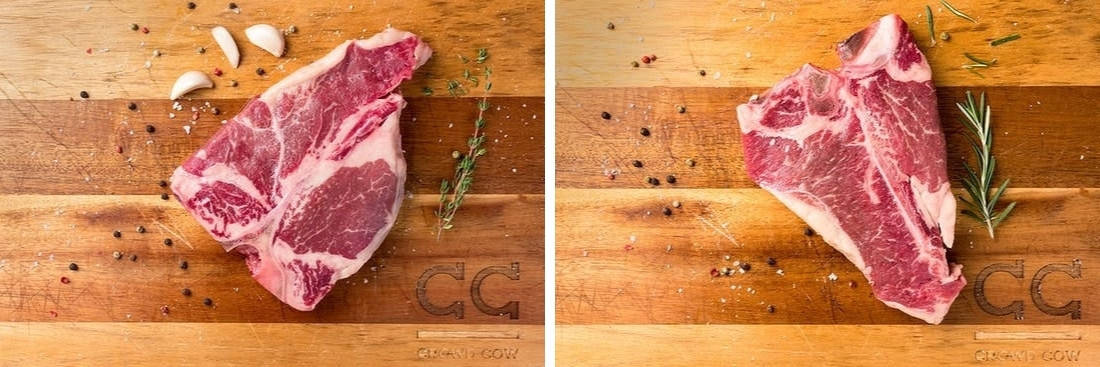
Crowd Cow offers three distinct types of porterhouse steak, including a 45-day dry-aged variation for customers looking for unrivaled tenderness with a characteristic nutty, almost cheesy dry-aged taste.
The average weight of these steaks is 1 pound.
What is a Ribeye Steak?
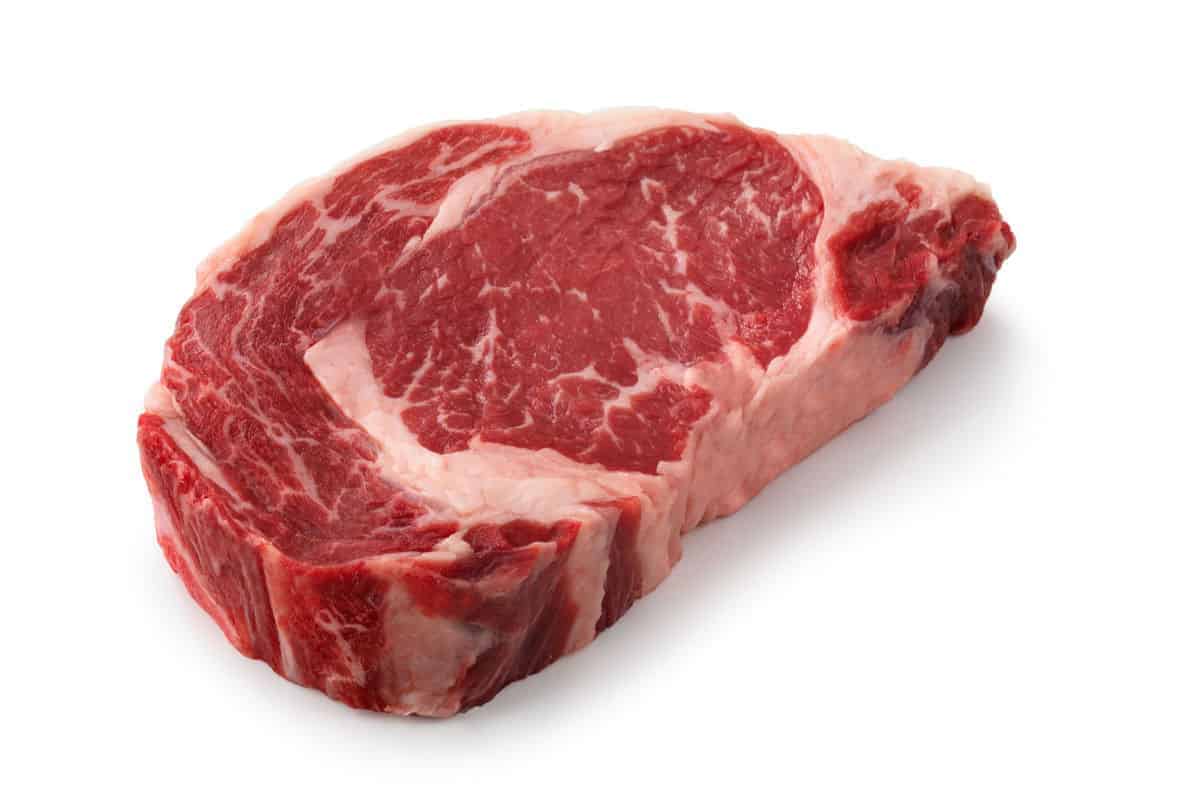
Ranging from vaguely oval-shaped to a rounded-off rectangle, a ribeye steak is a boneless cut. If you see one with the bone attached, that’s a rib steak.
They’re a lovely deep red but with a fair bit of marbling and some very deep intrusions of fat. If you’re fortunate, you may get the rib cap attached to your ribeye, a very flavorful and tender strip of meat divided from the main portion of the cut by a wedge of fat.
A ribeye is generously sized, typically weighing around 10 ounces, but could potentially be twice that weight. Thicknesses vary, but 1.25 inches is a good starting point, with 1.5 to 2 inches being about perfect.
If ordering in the US, every butcher will know the name of this steak and be able to provide it, but if needed the industry ID you can tell them is: IMPS/NAMP – 1112A.
Where On the Cow does Ribeye Come From?
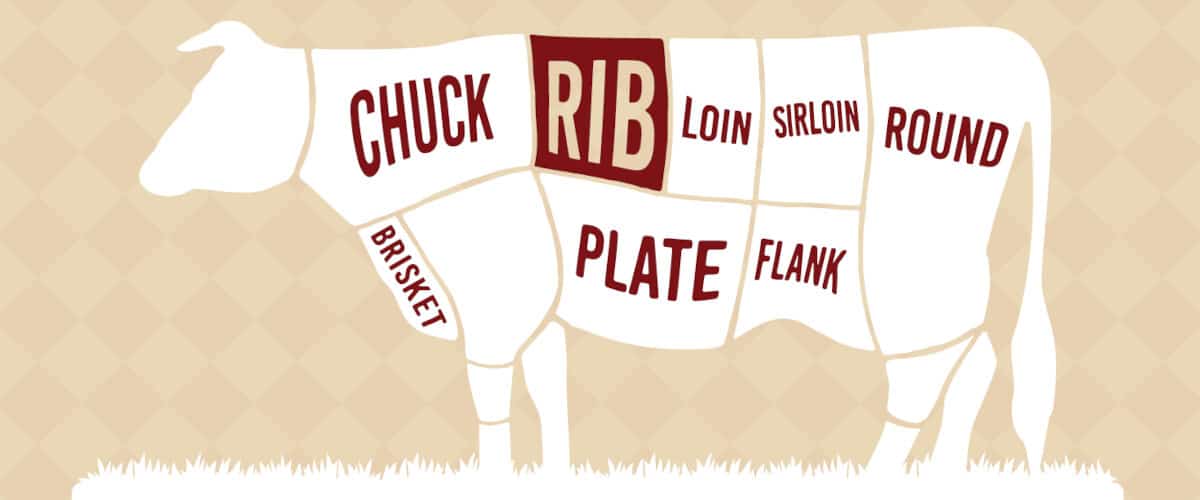
No surprise, a ribeye comes from the rib primal, which is the first primal section forward of center on the cow.
They’re cut from the top-most area of the ribs between rib six and rib twelve. Also in this neighborhood is the prime rib cut.
Where to Buy Ribeye Steak Online
Crowd Cow
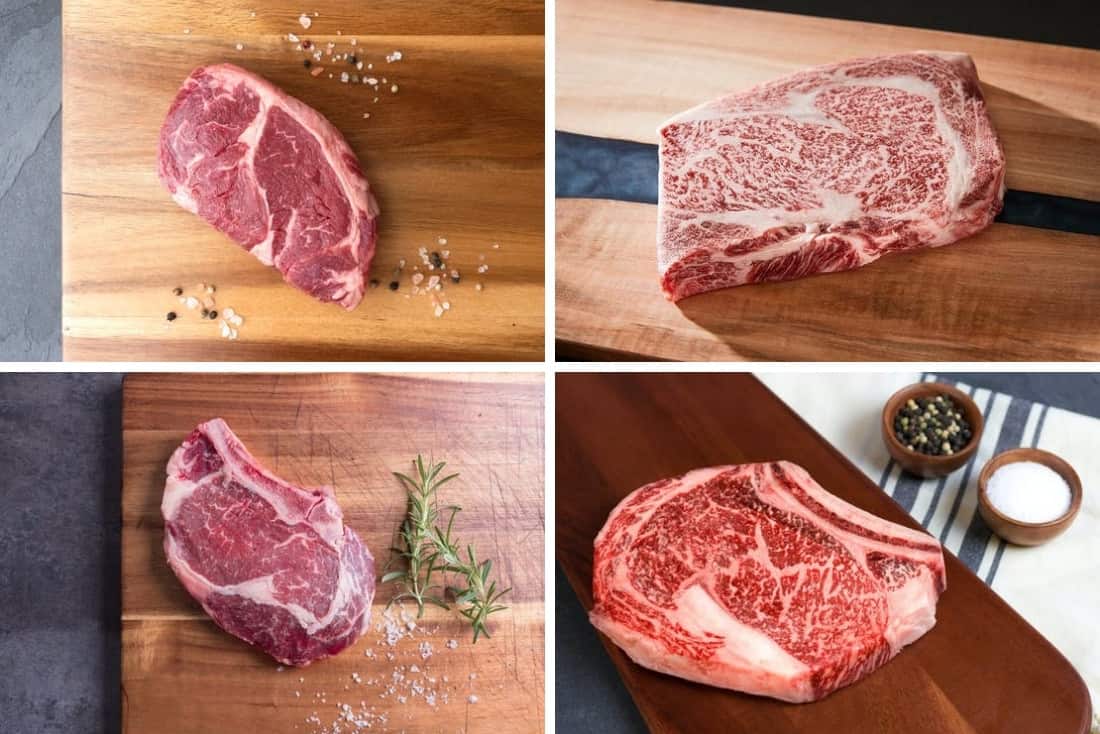
Crowd Cow has a large assortment of ribeye steaks with different degrees of marbling, sourced from various farms and grown in different ways!
You have the following options to choose from: Pasture-raised; 100% grass-fed; Fullblood Wagyu; Wagyu cross. And each variety has the option of being bone-in or boneless.
They have steaks at reasonable prices to fit any budget, so you may be as frugal or luxurious as you desire.
Snake River Farms
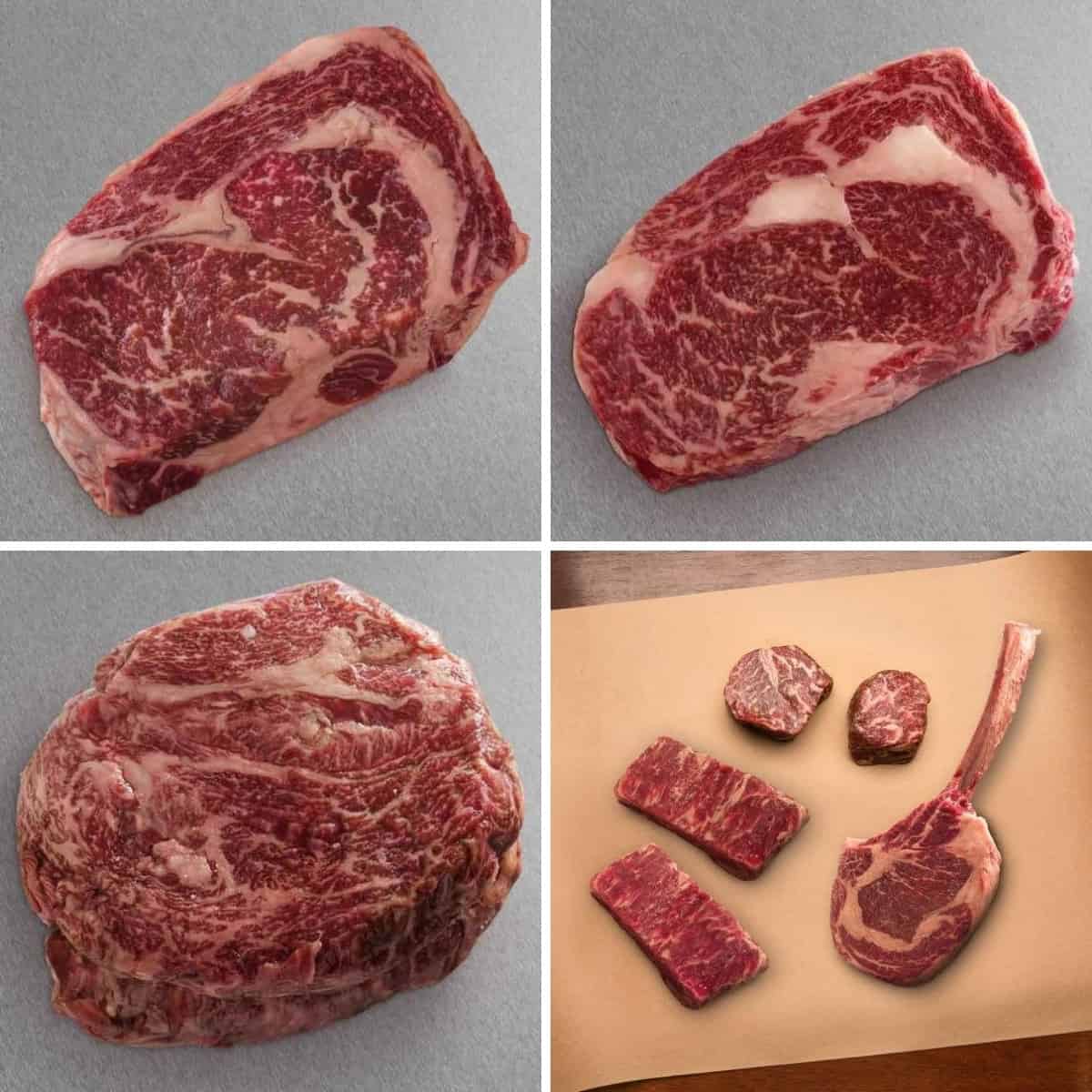
Snake River Farms has no fewer than 20 results for ‘ribeye’ throughout their American Wagyu Black and American Wagyu Gold grades.
You can choose from: Ribeye (standard cut); Ribeye filet; Cap of ribeye; Rolled cap of ribeye; Tomahawk ribeye; Cowboy steak; Eye of ribeye roast; Multipacks.
Snake River Farms developed their own cow breed from which their ‘American Wagyu’ cuts are derived. They are Wagyu cross, producing a more marbled beef than USDA prime, profoundly meaty, rich, and nutty, and is so good it must be seen and eaten to be believed.
Check Price on Snake River Farms
Porterhouse vs Ribeye: What is the Difference?
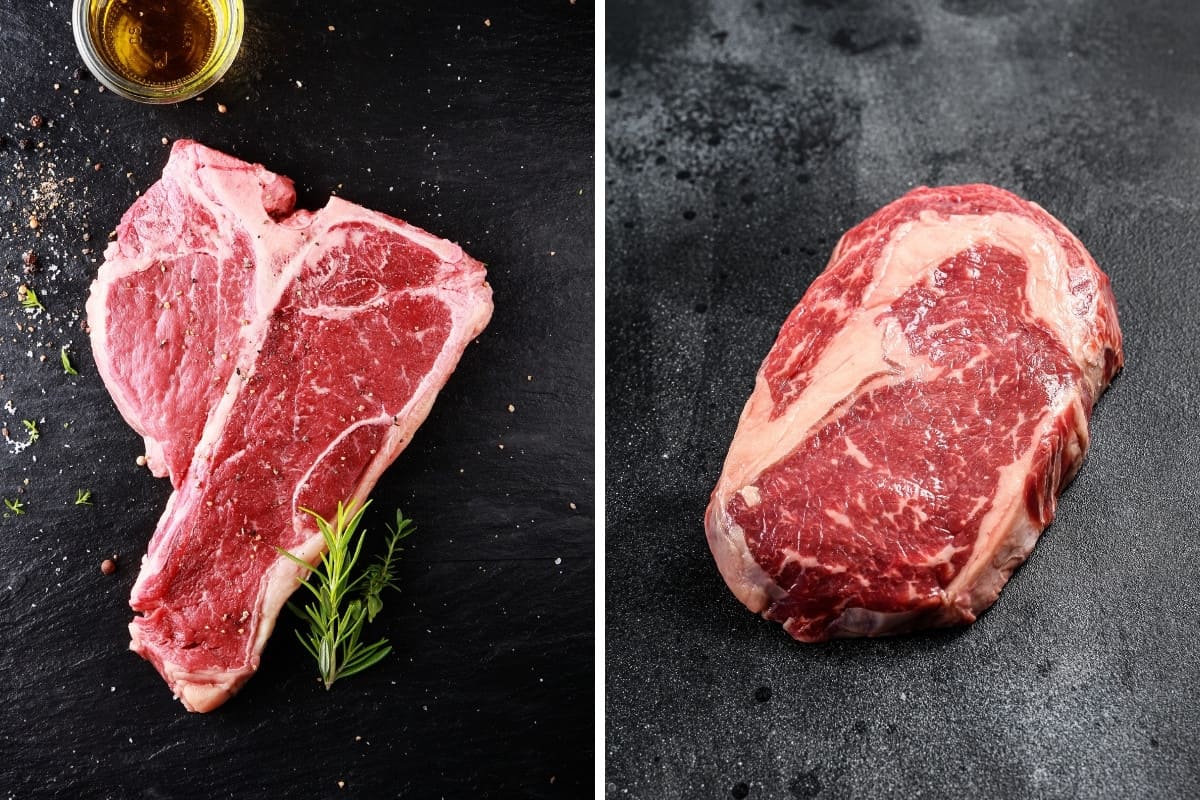
Now that you know the basics of each steak, it’s time for a more detailed comparison. Which of them has it where it counts?
Fat Levels
The fat in a porterhouse appears in the form of ribbon-like marbling that crisscrosses the meat on both sides of the bone. A ribeye also has some marbling, but the big difference is in the thick chunks of fat that occur to the exterior and interior of the cut.
Both steaks are ranked among the fattiest steak cuts. And, while both cuts include a hefty percentage of fat, overall, a ribeye has a larger fat component.
Bone Content / Appearance
This is an easy one: porterhouse steaks have a bone, and ribeyes don’t.
As mentioned above, if a ribeye has a bone (a rib bone, of course), the cut is properly labeled as a rib steak. The rib will be maybe 4 or 5 inches long and runs along one side of the steak.
The bone in a porterhouse is shaped like a capital T and will vary in size depending on where on the spine it’s cut from.
Cost: Which is More Expensive?
The cost of beef fluctuates over time, of course. And there are variables almost beyond counting: dry-aged, grass-fed, wholesale, retail, different USDA beef grades — and the list goes on.
So, the best we can do here is give an approximation of an average to determine which is more expensive.
By the way, we’re looking at this on a per-pound basis. The size of the cut is obviously the final determiner of what you shell out for your steak. Note that all prices are in US dollars.
Based on a bunch of agonizing research, it seems reasonable to say that:
Boneless ribeye steak averages about $14 to $15/lb. That means you can find them both cheaper and more expensive, but we’ll accept that as a point of comparison.
Bone-in rib steaks are a little less costly on average, by about $1 per-pound.
Of course, those big, Instagrammable tomahawks come at a premium – expect to pay $20/lb. Or more. (Don’t forget, you’re paying for that extra bone weight, too!)
Looking at porterhouse (which, naturally, only comes bone-in), the price can vary wildly depending on the grade and how large the tenderloin is.
On average, a porterhouse will cost you a bit less than a ribeye steak, but not by a lot – expect to pay in the neighborhood of $12/lb.
So in summary:
- Ribeye is $14 to $20 per-pound on average
- Porterhouse is around $12 per-pound on average
Cooking Methods — Is One Easier to Cook than the Other?
That signature porterhouse bone can cause some headaches because the meat next to the bone cooks more slowly than the rest of the steak.
Also, the tenderloin tends to cook quicker, and is better at a lower temperature than the strip side. Meaning you sometimes get either an overcooked tenderloin or an undercooked strip.
To solve this, always cook the porterhouse with the strip side closer to the heat!
A boneless ribeye, on the other hand, will cook all the way evenly through, and in less time. So overall, a ribeye will be easier to cook.
Mind you, some folks swear by broiling porterhouse. But this isn’t FoodBroilFriends, so ribeye wins for our purposes.
Is One Better for Grilling than the Other?
The lack of bone makes a ribeye (assuming you’ve chosen a boneless cut) a piece of cake to cook on a barbecue. But, the heavier fat content may lead to more flare-ups than you’ll get with a porterhouse.
There seems to be a slight preference for ribeye over porterhouse among the grillers of the ‘net.
Reasons cited range from ease of cooking to cost-effectiveness. In fact, boneless steaks of all types tend to top the lists of most popular steaks for grilling.
Difference in Tenderness
In a sense, we’re really comparing three steaks when we do porterhouse vs anything.
The tenderloin side of the bone is extremely tender, just like every cut from this part of the cow, including the coveted filet mignon.
The strip side is reasonably tender, but nothing like its next-door neighbor.
Moving to the ribeye, the marvelous marbling makes this a very tender cut with a soft mouthfeel. It’s not as tender as the premium side of the porterhouse, however.
Which is More Flavorful
Here, the two sides of the porterhouse change leaders — the strip packs more flavor than the loin side, though both sides are excellent.
But, a ribeye is, hands-down, the more flavorful of these two steaks. The taste is rich and beefy, thanks to the combination of marbling, fat intrusions, and tender texture.
Which is USUALLY Bigger?
Typically, the porterhouse is the winner in this category, even ignoring the added weight of the bone.
It’s not unusual to find one of these bad boys tipping the scales at 2 pounds, with typical restaurant portions averaging around 24 ounces. They’re larger in terms of length and width, too.
Tomahawks Can Break The Size Rules
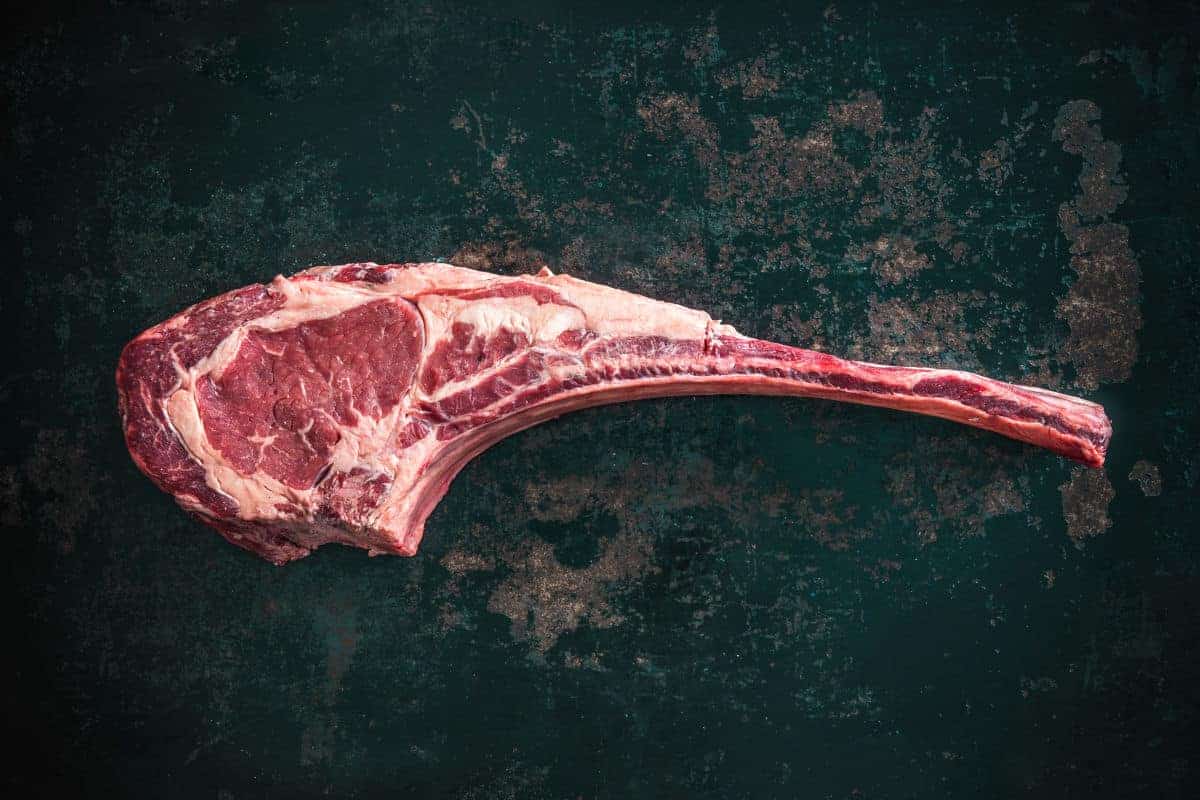
I did say that porterhouse are “usually” biggest in the last section!
You can buy huge bone-in ribeyes called “tomahawks”, so named because of their size and shape.
The steak is left attached to a long, curving rib bone, making it look something like the famous axe-like weapon of the indigenous peoples of North America.
These epic cuts can easily weigh in at 2.5 pounds or more.
Which Steak is Better?
This match-up is a very close contest, and it’s not easy to rank one ahead of the other.
But, based on both subjective and objective analysis, and a seriously unscientific survey of the dub-dub-dub, between these cuts of steak the ribeye gets the nod.
The winning combination of tenderness, size, ease of cooking, cost (for a premium cut), and over-the-top flavor make ribeye one of the finest steaks available.
When Would You Pick One Over the Other
Let’s give the porterhouse some well-deserved love, though. It’s a magnificent cut of beef, and there are times when it may be more suitable.
For instance, you might choose it for a romantic dinner — it’s perfect for sharing since it’s actually two steaks sharing a single bone.
Also, the presentation of a nicely grilled porterhouse is second-to-none. For special events or any time you want to impress your guests, this steak gets it done.
For entertaining beef connoisseurs, though, the ribeye and its superior taste may be the better choice, however.
You could also see it as a cost-saving steak — cut a big ribeye into smaller pieces as part of a more substantial meal, or even slice it up and serve it over salad or a “Buddha bowl.”
Final Thoughts
Is the porterhouse vs ribeye debate now settled once and for all? Not a chance! Both steaks are fantastic, and each one has its die-hard supporters.
While I’ve played favorites just a bit, the truth is, cooked properly, I’d never turn down either steak.
Having said that, I hope you now better understand and can identify each steak at your butcher or grocery store and know what you’re getting into with each.
Thanks for stopping by for a bit of steak education. Buying good beef can be an investment, and you always want to spend your money wisely. Apply what you’ve learned here (and across the site), and soon delicious barbecues will be the rule rather than the exception in your life.
Feel free to share this or any other article you find here with your grilling compatriots and get the word out – great grilling is within reach!


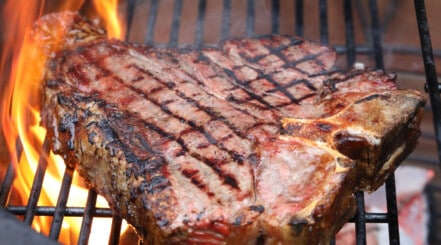
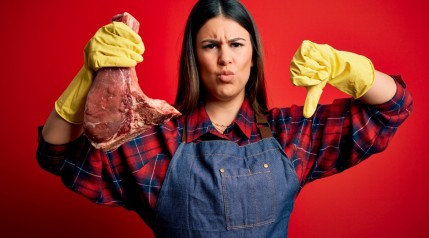
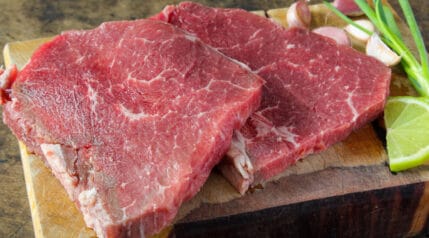
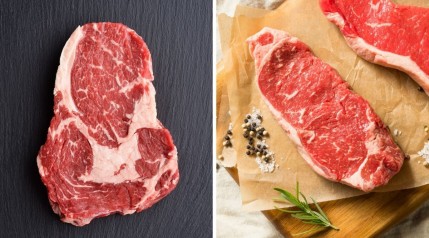
Great article, glad i just bought a 20Lb bonless Rib eye, cut into steaks and a small roast! Gonna bbq tonight!